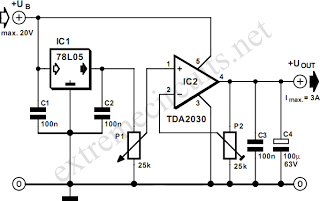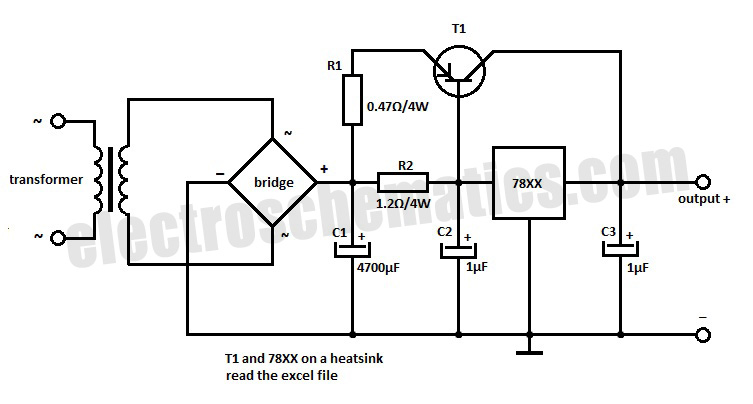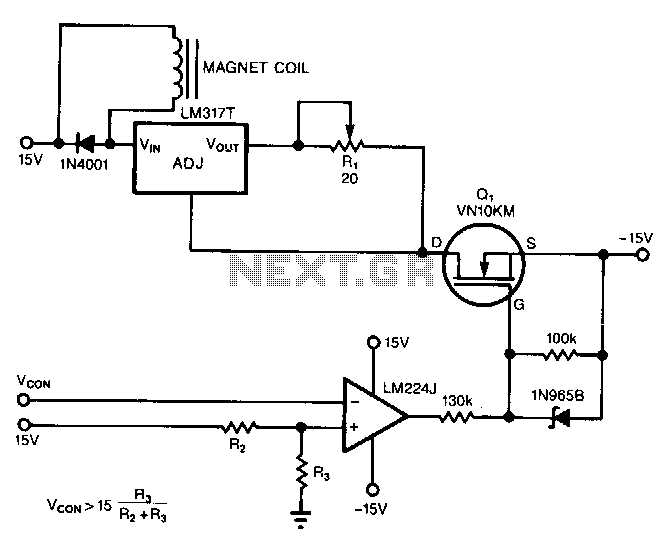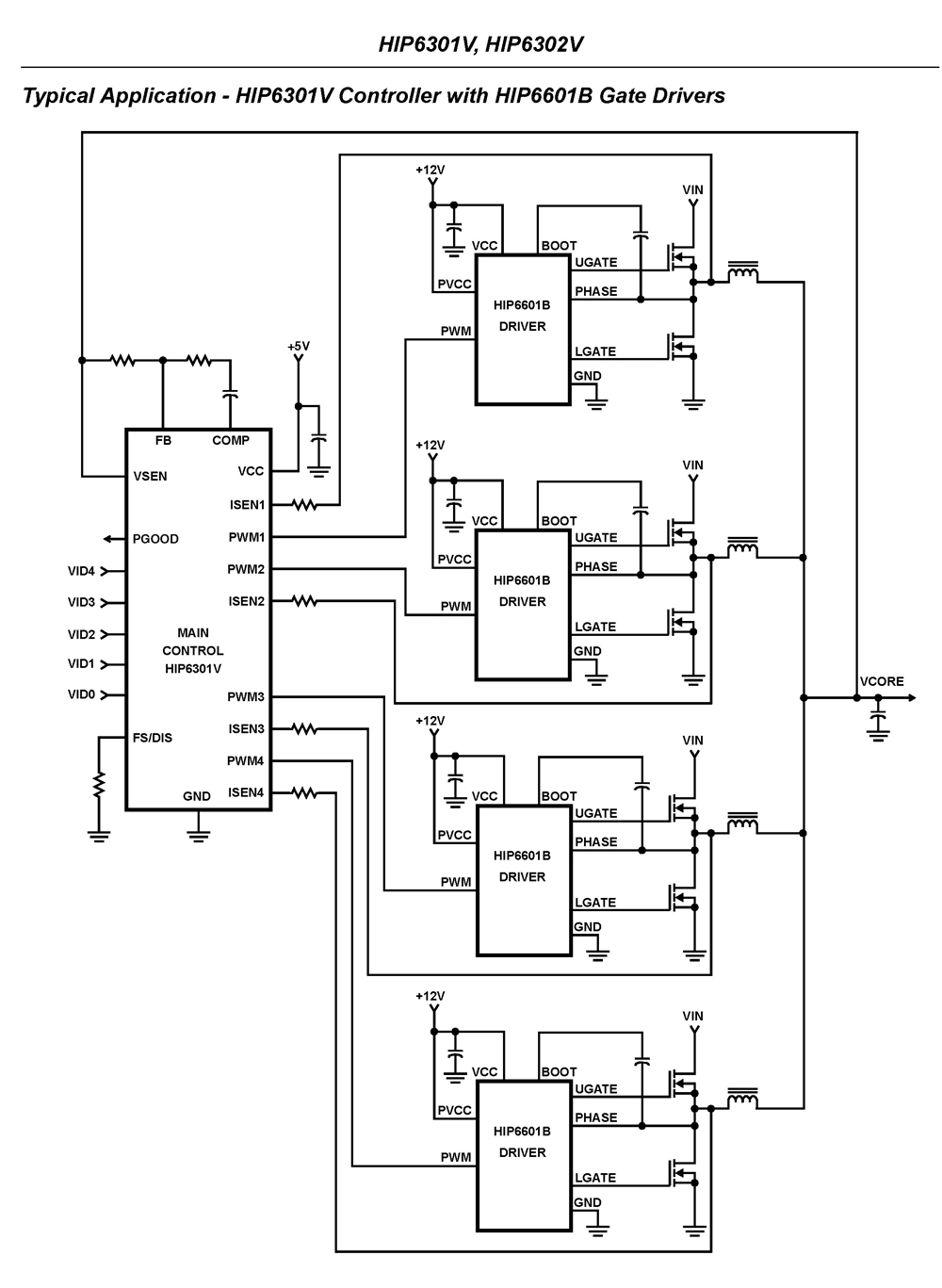
linear regulator
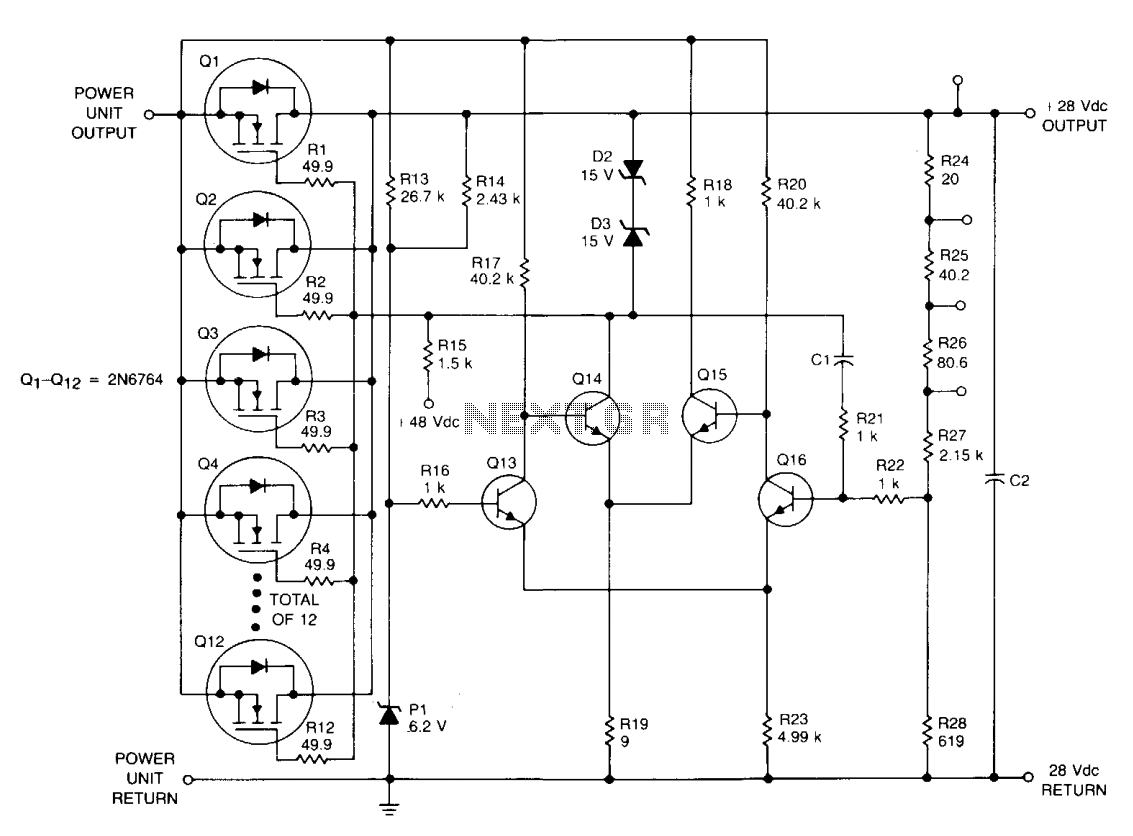
Designed for extreme temperature and radiation-hardened environments, this linear power supply can deliver 28 Vdc at 125 A from an AC-driven power unit. During operation, the output voltage of the power supply is monitored using a voltage divider formed by resistors R24 to R28, which feeds one input of a discrete differential amplifier made up of transistors Q13 through Q16. The other input of this amplifier connects to a radiation-hardened zener diode, Dl. Additionally, local feedback utilizing components R21 and C1 generates gain and phase shift that are independent of the individual parameters of the components, ensuring stable operation under the specified load conditions.
This linear power supply circuit is engineered to operate reliably in harsh environmental conditions, specifically targeting applications where exposure to extreme temperatures and radiation is prevalent. The primary output voltage of 28 Vdc at a substantial current of 125 A indicates that this power supply is designed for high-power applications, which may include aerospace, military, or industrial equipment operating in challenging conditions.
The voltage sensing mechanism is critical for maintaining the output voltage within specified limits. The voltage divider network, consisting of resistors R24 to R28, effectively scales down the output voltage for accurate measurement. This scaled voltage is then fed into a differential amplifier, which is crucial for comparing the sensed voltage against a reference voltage provided by the radiation-hardened zener diode, Dl. The use of a zener diode ensures that the reference voltage remains stable and unaffected by radiation, which is essential for maintaining performance in radiation-hardened applications.
The discrete differential amplifier, constructed from transistors Q13 to Q16, amplifies the difference between the sensed output voltage and the reference voltage. This amplification is necessary for precise control of the output voltage, allowing the power supply to respond dynamically to load changes. The design choice of a discrete amplifier rather than an integrated solution may provide enhanced performance characteristics in terms of radiation resilience and thermal stability.
Local feedback is implemented through resistors R21 and capacitor C1. This feedback loop is designed to enhance the gain and phase response of the amplifier, ensuring that the power supply remains stable even as the load conditions fluctuate. The independence of gain and phase shift from individual component parameters is a significant advantage, as it allows for consistent performance across a range of operating conditions and component tolerances.
Overall, the combination of robust voltage sensing, differential amplification, and effective local feedback mechanisms makes this linear power supply circuit suitable for demanding applications where reliability and performance are paramount.Intended for extreme temperature, radiation-hardened environments, this linear supply is capable of supplying 28 Vdc at 125 A from an ac-driven power unit. In operation, power supply output voltage is sensed by the voltage divider consisting of R24 to R28 and fed to one input of a discrete differential amplifier composed of Q13 through Q16.
The other input of the amplifier is connected to a radiation-hardened zener diode, Dl. Local feedback using R21 and Cl produces gain to phase shift that are independent of individual component parameters, which provides stable operation into the required loads. 🔗 External reference
This linear power supply circuit is engineered to operate reliably in harsh environmental conditions, specifically targeting applications where exposure to extreme temperatures and radiation is prevalent. The primary output voltage of 28 Vdc at a substantial current of 125 A indicates that this power supply is designed for high-power applications, which may include aerospace, military, or industrial equipment operating in challenging conditions.
The voltage sensing mechanism is critical for maintaining the output voltage within specified limits. The voltage divider network, consisting of resistors R24 to R28, effectively scales down the output voltage for accurate measurement. This scaled voltage is then fed into a differential amplifier, which is crucial for comparing the sensed voltage against a reference voltage provided by the radiation-hardened zener diode, Dl. The use of a zener diode ensures that the reference voltage remains stable and unaffected by radiation, which is essential for maintaining performance in radiation-hardened applications.
The discrete differential amplifier, constructed from transistors Q13 to Q16, amplifies the difference between the sensed output voltage and the reference voltage. This amplification is necessary for precise control of the output voltage, allowing the power supply to respond dynamically to load changes. The design choice of a discrete amplifier rather than an integrated solution may provide enhanced performance characteristics in terms of radiation resilience and thermal stability.
Local feedback is implemented through resistors R21 and capacitor C1. This feedback loop is designed to enhance the gain and phase response of the amplifier, ensuring that the power supply remains stable even as the load conditions fluctuate. The independence of gain and phase shift from individual component parameters is a significant advantage, as it allows for consistent performance across a range of operating conditions and component tolerances.
Overall, the combination of robust voltage sensing, differential amplification, and effective local feedback mechanisms makes this linear power supply circuit suitable for demanding applications where reliability and performance are paramount.Intended for extreme temperature, radiation-hardened environments, this linear supply is capable of supplying 28 Vdc at 125 A from an ac-driven power unit. In operation, power supply output voltage is sensed by the voltage divider consisting of R24 to R28 and fed to one input of a discrete differential amplifier composed of Q13 through Q16.
The other input of the amplifier is connected to a radiation-hardened zener diode, Dl. Local feedback using R21 and Cl produces gain to phase shift that are independent of individual component parameters, which provides stable operation into the required loads. 🔗 External reference

